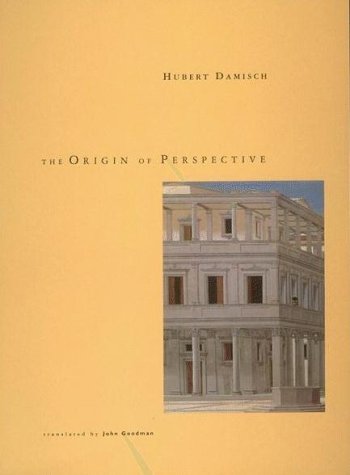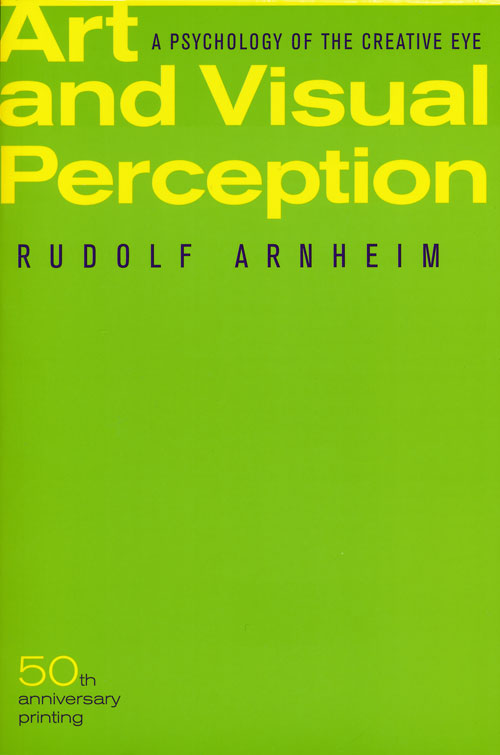Hubert Damisch: The Origin of Perspective (1987–) [EN, CR]
Filed under book | Tags: · architecture, art, art history, art theory, geometry, history of architecture, mirror, painting, perspective, renaissance, representation, space, theatre

“In part a response to Panofsky’s Perspective as Symbolic Form, The Origin of Perspective is much more. In France it is considered one of the most important works of art history to have appeared in the last twenty years. With the exception of Michel Foucault’s analysis of Las Meninas, it is perhaps the first time a structuralist method such as the one developed by Claude Lévi-Strauss in The Way of the Masks has been thoroughly and convincingly applied to Western art.
The task Damisch has set for himself is to refute both the positivist critics, whose approach makes up the bulk of perspective studies and is based on a complete repression of Panofsky’s early work, and the current pseudo-avant-gardist position (whether in the field of cinema studies or in literary criticism), which tends to disregard facts and theoretical analysis. Damisch argues that if a theoretical analysis of perspective is possible, using all the tools of structuralist semiotics, it is only possible in the context of a close look at its appearance in history, beginning with the details of the ‘invention’ of perspective.”
Originally published in French as L’Origine de la perspective, Flammarion, Paris, 1987.
Translated by John Goodman
Publisher MIT Press, 1994
ISBN 0262041391, 9780262041393
477 pages
Review: Wood (The Art Bulletin, 1995).
Commentary: Iversen (Oxford Art Journal, 2005).
WorldCat (EN)
The Origin of Perspective (English, 1994, chapter 14 missing, 24 MB, no OCR)
Porijeklo perspektive (Croatian, trans. Zlatko Wurzberg, 2006, added on 2018-7-8)
Jonathan Crary: Techniques of the Observer: On Vision and Modernity in the Nineteenth Century (1990–) [EN, HU, TR, ES, BR-PT, CN]
Filed under book | Tags: · 1800s, art, art history, body, camera obscura, image, knowledge, optics, painting, perception, perspective, representation, science, space, vision

“In Techniques of the Observer Jonathan Crary provides a dramatically new perspective on the visual culture of the nineteenth century, reassessing problems of both visual modernism and social modernity.
Inverting conventional approaches, Crary considers the problem of visuality not through the study of art works and images, but by analyzing the historical construction of the observer. He insists that the problems of vision are inseparable from the operation of social power and examines how, beginning in the 1820s, the observer became the site of new discourses and practices that situated vision within the body as a physiological event. Alongside the sudden appearance of physiological optics, Crary points out, theories and models of “subjective vision” were developed that gave the observer a new autonomy and productivity while simultaneously allowing new forms of control and standardization of vision.
Crary examines a range of diverse work in philosophy, in the empirical sciences, and in the elements of an emerging mass visual culture. He discusses at length the significance of optical apparatuses such as the stereoscope and of precinematic devices, detailing how they were the product of new physiological knowledge. He also shows how these forms of mass culture, usually labeled as “realist,” were in fact based on abstract models of vision, and he suggests that mimetic or perspectival notions of vision and representation were initially abandoned in the first half of the nineteenth century within a variety of powerful institutions and discourses, well before the modernist painting of the 1870s and 1880s.”
Publisher MIT Press, Dec 1990
October Books series
ISBN 0262031698
171 pages
Publisher (EN)
Techniques of the Observer: On Vision and Modernity in the Nineteenth Century (English, 1990, 21 MB, updated on 2015-2-18)
A megfigyelő módszerei. Látás és modernitás a 19. században (Hungarian, trans. Ágnes Lukács, 1999, no OCR)
Gözlemcinin Teknikleri. On Dokuzuncu Yüzyılda Görme ve Modernite (Turkish, trans. Elif Daldeniz, 2002/2004, added on 2024-3-3)
Las técnicas del observador: visión y modernidad en el siglo XIX (Spanish, trans. Fernando López García, 2008)
Técnicas do observador: visão e modernidade no século XIX (BR-Portuguese, trans. Verrah Chamma, 2012, added on 2024-3-3)
Guan cha zhe de ji shu / 观察者的技术 (Chinese, 2017, added on 2024-3-3)
Rudolf Arnheim: Art and Visual Perception (1954–) [EN, RU, PL, RO, ES, BR-PT]
Filed under book | Tags: · architecture, art theory, colour, kinesthesia, light, movement, music, painting, perception, perspective, physiology, psychology, sculpture

“Since its publication in 1954, this work has established itself as a classic. It casts the visual process in psychological terms and describes the creative way one’s eye organizes visual material according to specific psychological premises. In 1974 this book was revised and expanded, and since then it has continued to burnish Rudolf Arnheim’s reputation as a groundbreaking theoretician in the fields of art and psychology.”
Publisher University of California Press, 1954
Expanded and revised edition, 1974
ISBN 0520243838
508 pages
Interview with the author (Uta Grundmann, Cabinet, 2001)
Publisher (EN)
Art and Visual Perception (English, 1954/1974, 26 MB)
Iskusstvo i vizualnoe vospriyatie (Russian, trans. V.N. Samokhin, 1974/2000, DJVU, no OCR)
Sztuka i percepcja wzrokowa (Polish, trans. Jolanta Mach, 1978, 24 MB, no OCR, via nuitienne)
Arta si perceptia vizuala (Romanian, trans. Florin Ionescu, 1979, 35 MB, no OCR, via)
Arte y percepción visual (Spanish, trans. María Luisa Balseiro, 1979/1997, 43 MB)
Arte e percepção visual (Brazilian Portuguese, trans. Ivonne Terezinha de Faria, 1980/2005)

